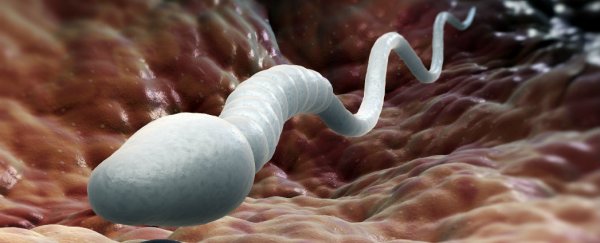Scientists have discovered a new piece in the puzzle that is human conception, and say a deeper understanding of the key players in the fusion of an egg and sperm could lead to effective male contraceptives in the future.
The study, by researchers from the University of Virginia Health System in the US, builds on the discovery of a protein called ESP1 that forms in the head of a man's sperm. Unlike many other proteins that are lost in the process of fusion between egg and sperm, ESP1 manages to stick around, and the team thinks this is because it plays a crucial role in reinforcing the structure of the sperm, allowing it to burrow in towards its target. "We suspect ESP1 is one of the key molecules that helps to stabilise the equatorial segment region of the sperm head," says lead researcher and biologist, John Herr.
Herr and his team discovered the ESP1 protein 15 years ago, when they were investigating its role in the massive transformation that occurs in the sperm head as it penetrates the outer lining of an egg. This transformation - known as the acrosomal reaction - is set in action by a cache of enzymes contained by the sperm head.
When the researchers watched the movements of ESP1 throughout the entire fusion process, they found that while many other proteins disappeared as the sperm head morphed away from its original form, this curious protein remained in tact, suggesting that it still had a role to play in the fertilisation process.
Publishing in the journal Biology of Reproduction, the team suggests that the protein remains long after the others were destroyed because it plays a key structural role in the area where the sperm-egg fusion occurs. They think that if they can target the protein using some kind of drug, they can block its activity, and prevent the sperm from fusing with an egg. And voila, no pregnancy and no babies!
"Understanding at the molecular level exactly how the sperm is able to bind with and enter the egg opens opportunities to identify molecules that can disrupt or block the fertilisation event," Herr said in a press release. "You want to know which molecules are located precisely where, and when, as the sperm head becomes remodelled prior to fertilisation. Just getting all the molecules defined and dissected and located in their correct subcellular positions is a major challenge, and this report adds to that fund of knowledge."
Herr says they're a long way off the development of a contraceptive based on the discovery, because they still need to figure out which other proteins ESP1 is interacting with at the point of fusion. But as the lead researcher behind SpermCheck, a home fertility test for men that's now being sold all over the States, Herr's no stranger to getting practical applications from his research. Let's hope he can do it again.
